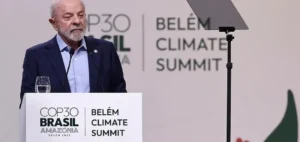At the United Nations Climate Change Conference in Dubai, 116 countries signed the Global Renewable and Energy Efficiency Pledge, pledging to triple renewable energy generation capacity to at least 11 terawatts (TW) and double global rates of energy efficiency improvement by 2030. This agreement, announced on December 2, represents a major milestone in this year’s negotiations, underlining a strengthened global commitment to the energy transition.
Accelerating global decarbonization
The initiatives were launched under the Global Decarbonization Accelerator (GDA) program, designed to accelerate the energy transition and reduce global emissions. The renewables target will require an unprecedented acceleration in deployment, from the current installed capacity of 2.3 TW for wind and solar. According to analyses by S&P Global Commodity Insights, around 4.6 TW of solar and wind capacity should be added by 2030, at an estimated cost of $4.7 trillion.
The Challenges of Energy Efficiency
Although energy efficiency improvement rates are expected to rise in all scenarios by 2030, a doubling seems beyond realistic expectations. “In the Inflections base scenario, energy intensity improvement rates increase by only 28% from 2022 levels,” said S&P Global analysts. Even the net zero scenarios only achieve a 79% and 90% improvement on 2022 levels by 2030.
The International Energy Agency’s Vision
According to the International Energy Agency (IEA), tripling renewables by 2030 is an “ambitious but achievable” goal. This will require “stronger policy actions by governments to ensure resilient technology supply chains, secure and cost-effective system integration of solar PV and wind, and deployment of renewables in many emerging and developing economies”, said the IEA in a recent report.
Hydrogen Declaration at COP28
The COP28 GDA program also includes the United Arab Emirates’ Declaration of Intent on Hydrogen, under which 27 countries have agreed to endorse a global hydrogen certification standard and recognize existing certification schemes, to facilitate global trade in low-carbon hydrogen. Defining clean hydrogen remains a challenge, but several countries and regions have already established rules and definitions for renewable and low-carbon hydrogen.
The commitment by world leaders to triple renewable energy production capacity by 2030 marks a turning point in global energy transition efforts. However, achieving these ambitious goals will require unprecedented international cooperation and strong government policies.






















